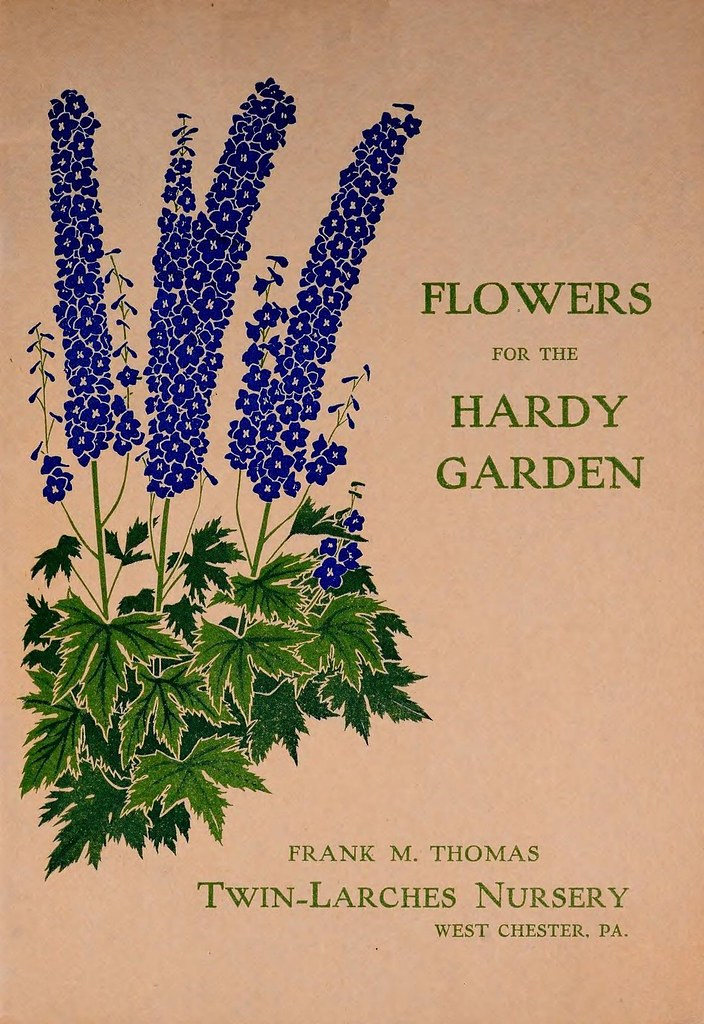#West Chester Pennsylvania
Photo

Library - Open
Family room library - large cottage open concept room library idea with medium tone wood flooring, yellow walls, a regular fireplace, a stone fireplace, and no television.
#building materials#dutch colonial style#west chester pennsylvania#historic preservation#general contractor
2 notes
·
View notes
Text

It's beginning to look a lot like Christmas as a Santa Claus train on the West Chester Railroad passes the former Pennsylvania Railroad shelter at Locksley.
December 8, 2012
8 notes
·
View notes
Photo

West Chester. February 2023.
#west chester#parking garages#pennsylvania#color photography#fujifilmxpro3#xf27mm2.8#nightwalkermagazine
41 notes
·
View notes
Text

Tonight in West Chester, Pennsylvania!
#Ratpiss#Artificial Scarcity#Trunk#Aroma#Vekna#Artificial Piss Tour#The Moose Lodge#West Chester#Pennsylvania#powerviolence#grindcore#grind#death metal#metal#extreme metal#heavy metal#sludge metal#sludge#punk#hardcore punk#crust#crust punk#American punk#American metal#Canadian punk#Canadian metal#live music
2 notes
·
View notes
Text
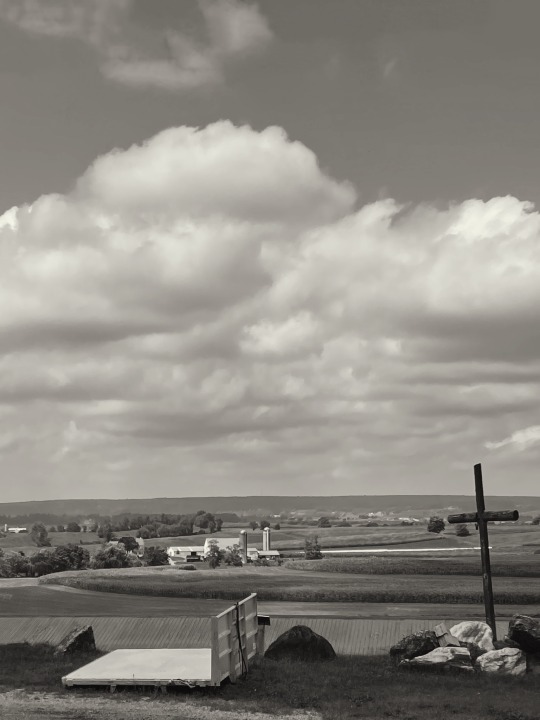
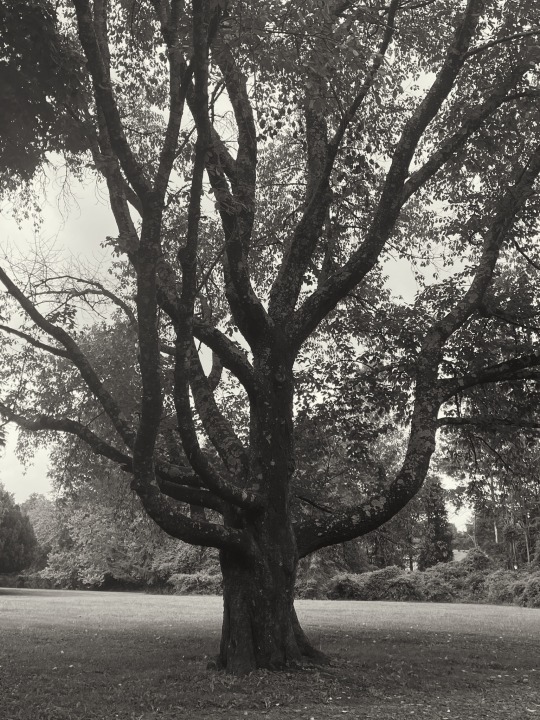
Something slumbers beneath it all.
#personal#today#lancaster county#west Chester#Baldwin’s book barn#black & white#pennsylvania#Pennsylvania gothic
2 notes
·
View notes
Text
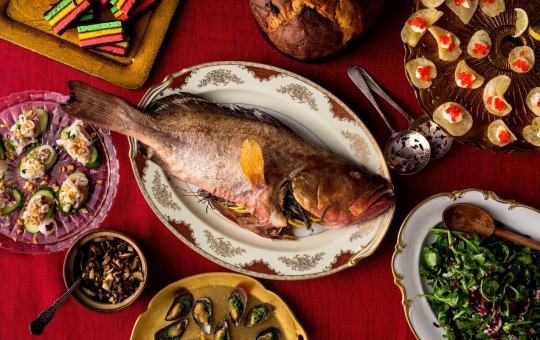
There are as many variations on the Feast of the Seven Fishes as there are participants. Menus often have changed drastically since the turn of the 19th century, but the object of cultivating family and heritage remains. Photograph By Andrew Scrivani, The New York Times/Redux
What is the Feast of the Seven Fishes?
This Christmas Eve seafood feast is an Italian American tradition that dates back to an immigration wave in the 1900s.
— By Allie Yang | Wednesday July 26, 2023
An episode aptly titled “Fishes” from Hulu’s breakout series The Bear explores complex family dynamics against the backdrop of an Italian American tradition: The Feast of the Seven Fishes.
Throughout the Season 2 episode, no one seems able to adequately explain its history. Characters attempt to contextualize the origins of the meal, with explanations ranging from “it’s tradition… the seven fishes” to “it’s a chance to be together and to take care of each other and to eat together, and there’s seven fishes, which means you have to make seven entirely different dishes, seven entirely different ways.” A discerning viewer will note the circular reasoning.
By episode’s end, the audience might leave with unanswered questions. Namely: What is the Feast of the Seven Fishes, and where did it originate?
Italian Origins
The Feast of the Seven Fishes is a dear tradition to many Italian Americans who enjoy (at least) seven different seafood dishes on Christmas Eve. You might find labor-intensive preparations of baccalà (salted cod fish), calamari fritti with lemon and marinara sauce, stuffed escarole, fried smelt, scungilli (conch) in a chilled seafood salad, and stuffed clams oreganata.
You won’t hear about “festa dei sette pesci” in Italy though, says Michael Di Giovine, professor of anthropology at West Chester University of Pennsylvania and author of Edible Identities. In Italy, the holiday is simply “la vigilia,” “the eve” of Christmas. And fish is really only eaten in Southern Italy on the holiday.
This is because the feast has evolved to be uniquely Italian American over the past hundred years.
At the turn of the 19th century, Italian immigration exploded, numbering 300,000 in the 1880s, jumping to 2 million by 1900. As Italian immigrants moved away from extended family and their children grew and married Americans, the Feast of the Seven Fishes evolved from la vigilia into something much more extravagant. Di Giovine says the feast was a way to differentiate themselves, a marker of identity. It also became a tradition to strengthen bonds with both family present and ancestors past.
Today, there are as many interpretations of the feast as there are participants, Di Giovine says.
Why Fish—And Why Are There Seven?
A vast majority of Italian immigrants to the United States were from rural Southern Italy at the turn of the 19th century. When the country was unified in 1861, they had new freedoms from a weakened aristocracy. They came to America because there were jobs (from building railroads to skyscrapers) and mobility. Friends and family found success and brought their loved ones to the U.S.
Some say fish was chosen for the Feast because it was plentiful for impoverished families in Southern Italy. Others say the sea represented Italian Americans’ connection between their old and new homes. Still others say fish was served simply because it’s seen as an aphrodisiac.
Though many families no longer associate the feast with Catholic tradition, there’s likely a religious explanation for the seafood. The first Christians used fish iconography to denote membership. In one biblical tale, Jesus procures a large catch of fish, and promises his disciples an abundance of followers when he commands them to be “fishers of men.” To this day, the Pope wears the “ring of the fisherman.”
Seven is also a holy figure: it’s the number of sacraments and deadly sins. In the Bible, Jesus miraculously feeds a crowd of people with seven loaves and fishes. “Consumed in multiples of seven, then, fish may be a deeply ingrained symbol of sanctifying and revivifying a plentiful group, and of promising continued abundance for posterity,” Di Giovine writes in a 2010 paper on the subject.
Tradition is Always Evolving
Italian culture is very regional, with small communities specializing in certain foods. North and Central Italy didn’t eat fish on Christmas Eve. The rush of immigrants at the turn of the 19th century were from the South, which has Spanish influences on the language and food. Fish, olive oil, vinegar, beans, tomatoes and fried foods like pizza fritta (pizza pockets) and zeppoles (donuts) are foods from the Italian South (notably not pasta).
In the 1900s, anti-Italian sentiment was high and Italians from different regions were lumped together by outsiders. Eventually, traditions also became melded together to produce the current Americanized image of pan-Italian food that ranges from pizza to cannoli, which are both regional in Italy.
After World War II, Italians were accepted members of American society. They moved (with everyone else) to the suburbs, their kids went to school with those from other backgrounds, and TV was popularized, homogenizing the population’s taste. Language and religion are lost quickly in this situation, Di Giovine says, and food could be a way to separate yourself that you could choose when to use.
Writer and director Robert Tinnell made a comic in 2004 about his experience with the Feast of the Seven Fishes, which he later made into a 2019 movie. Growing up in North Central West Virginia, he fondly remembers his great grandmother organizing the Feast. After she died, his grandfather and other men in the family took over. That particular masculine domesticity is something that the first Italian immigrants would have also performed out of necessity: men came to America first, without their wives and daughters.
However, knowledge about where to shop, when to prepare, how to cook, the history behind the meal, and family traditions quickly became the responsibility of mothers to pass down to their daughters, Di Giovine says. They are also likely the ones who have the ultimate say in making changes to recipes. Over time, families often tweak the menu to make things easier, cheaper, more abundant, and more accommodating of dietary restrictions.
“We’re not precious. I do a couple things that would have been on her table,” Tinnell says, referring to his great grandmother. “But then my wife loves seeking out new things. A few years ago, we picked up oysters and set them up outside over open flames; we roasted them in the shells. My family never did that. But I wouldn't trade the time that I spend with my father-in-law, my brothers, to all the kids—it's a new thing. And that's what's important here… that togetherness and that shared experience.”
#National Geographic#Culture#History#Christmas Eve#Seafood Feast#Italian 🇮🇹 -American🇺🇸#Fishes#Tradition#Michael Di Giovine#West Chester University of Pennsylvania#La Vigilia (The Eve)#Catholic Tradition#Southern Italy 🇮🇹#Fish Iconography#Spanish 🇪🇸 Influences#Pizza Fritta (Pizza Pockets) and Zeppoles (Donuts)#Cannoli#American Society#Robert Tinnell#North Central West Virginia
4 notes
·
View notes
Video
n0_w1150 by Biodiversity Heritage Library
Via Flickr:
Flowers for the hardy garden /. West Chester, Pa. :The Nursery.. biodiversitylibrary.org/page/46113925
#Catalogs#Nurseries (Horticulture)#Nursery stock#Pennsylvania#Perennials#Twin Larches Nursery#West Chester#Wild flowers#Mertz Library#The New York Botanical Garden#bhl:page=46113925#dc:identifier=http://biodiversitylibrary.org/page/46113925#flickr#delphinium#larkspur#print#fave
5 notes
·
View notes
Text
West Caln Township, Pennsylvania's Rendell Hoagland, Cindy Warren arrested
Malinda Hoagland of West Caln Township, Chester County, Pennsylvania, United States has died. She was 12.
youtube
View On WordPress
0 notes
Text
Firehouse Doors, West Chester, Pennsylvania
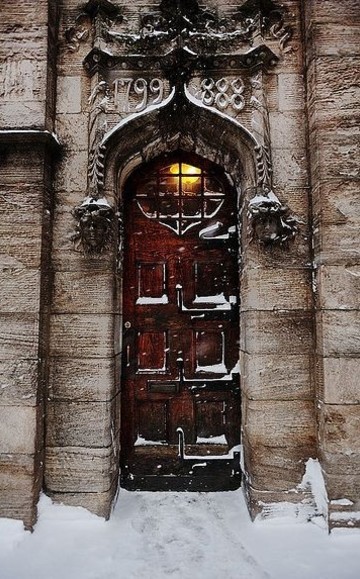
0 notes
Photo






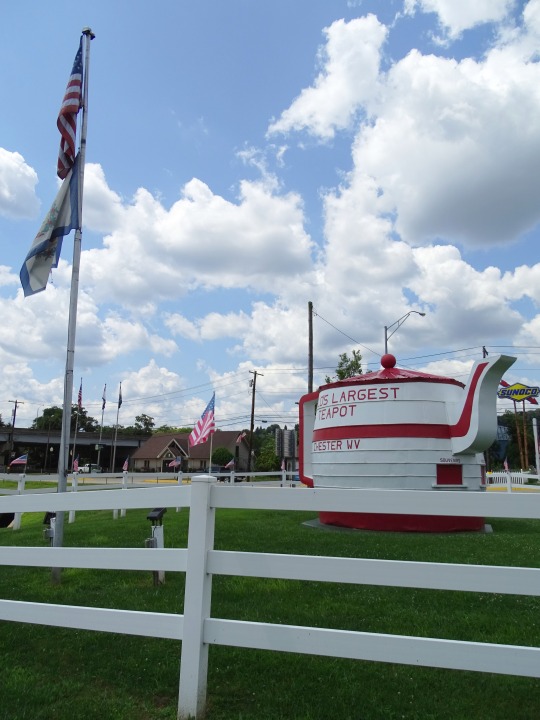



Clouds (No. 861)
Chester, WV (seven pics)
Pittsburgh, PA (three pics)
#World's Largest Teapot#Chester#West Virginia#Appalachian Mountains#USA#roadside attraction#cityscape#Pittsburgh#Pennsylvania#summer 2019#original photography#architecture#tourist attraction#landmark#travel#vacation#small town#blue sky#clouds
1 note
·
View note
Text
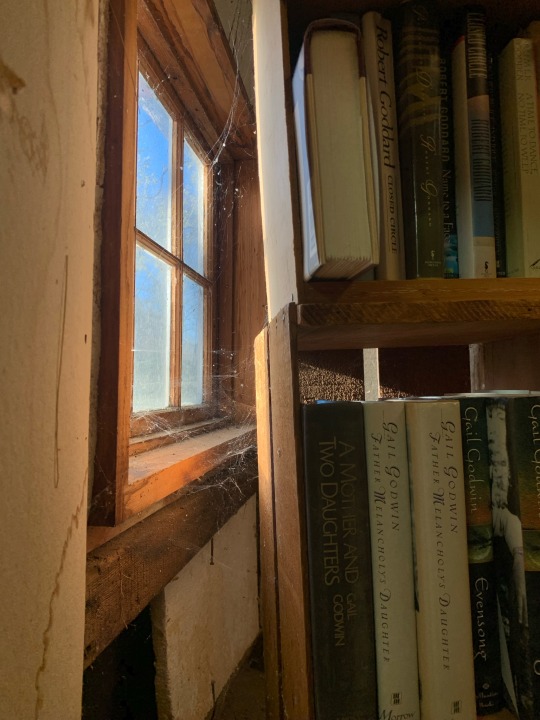
Never enough books
1 note
·
View note
Text

Chlorophyll Filtration
PA
#nature#nature photography#natural photography#forest#trees#sun#sunlight#sky#leaves#plants#photography#pennsylvania#west chester pa#chlorophyll
0 notes
Video
youtube
At Fisher Property Solutions, we focus on providing you with a solution to your situation so you can continue to do the things you love. Fisher Property Solutions is one of the most reliable and trusted names in the real estate industry. We buy houses fast in West Chester and the surrounding areas.
Fisher Property Solutions
477 Noble Rd, Atglen, PA 19310
484-378-9379
My Official Website:- http://www.sellmyhousefastchestercounty.com/
Google Plus Listing:- https://www.google.com/maps?cid=16551205527505429693
Our Other Links:-
sell my house fast Chester County:- http://www.sellmyhousefastchestercounty.com/sell-your-house/
Service We Offer:-
selling property
buying houses
Real Estate services
Follow Us On:-
Facebook:- https://www.facebook.com/fisherpropertysolutions/
Twitter:- https://twitter.com/FisherProperty3
Pinterest:- https://www.pinterest.com/FisherPropertySolutions/
Instagram:- https://www.instagram.com/fisherpropertysolution/
#we buy houses fast West Chester#we buy houses pennsylvania#sell my house fast chester county#cash home buyers pa#sell my house fast pennsylvania
0 notes
Text

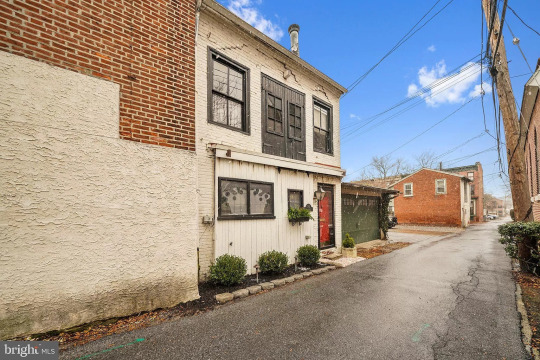
Probably have to fix the brick on top, but I love this 1890 carriage house conversion in West Chester, Pennsylvania. 1bd, 1ba, $245K.

Love the loft feel of this place.

Nice kitchen. Those vintage filing cabinet handles are a cool touch.


It's tiny, but so cute.

Nice laundry closet.

Upstairs bedroom has a cute corner cabinet and bookshelf.
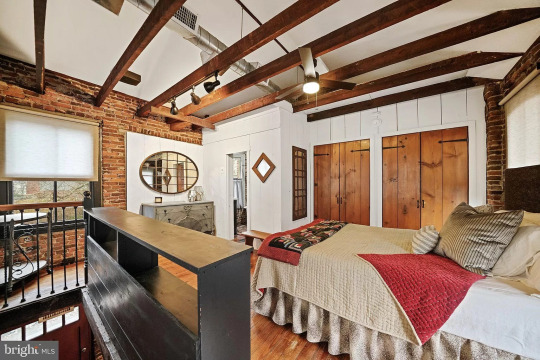
Double closets.

Isn't this cozy?


Cute vintage bath.


Beautiful private patio.
67 notes
·
View notes
Text

Chauncey Hare. West Chester, Pennsylvania 1972
27 notes
·
View notes
Text
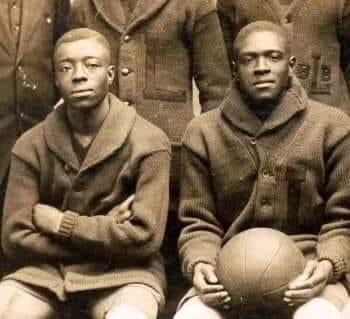
‘Pimp’ and ‘Lyss’: The Immortal Young Brothers by Claude Johnson (Black Fives Foundation)
They were brothers on and off the court. William Pennington Young, sometimes known as “Pimp” to his friends, and his older brother Ulysses S. Young, known simply as “Lyss” to his pals, were an unstoppable sibling pair of African American basketball stars that played during the 1910s and early 1920s.
They also made significant pioneering contributions off the court, long after their playing days ended.
Ulysses was born in Virginia in 1894. A year later, after his hard working parents migrated tot he North in pursuit of a better life, younger brother William was born in Orange, New Jersey.
A few years later, in 1900, their parents rented a room of their home to a young couple from Virginia, the Ricks family, who had a newborn son named James. Over the years the Young brothers embraced little James as if he were their own kin, and as the older boys got involved in sports, so did their protégé.
Something in that combined household created serious athletic skills.
Lyss and William attended nearby Orange High School, where they starred in football, basketball, and baseball. In 1910, while still in high school, the pair began playing semi-pro basketball for the Imperial Athletic Club, a local squad that competed against such teams as the Newark Strollers, the Montclair Athletic Club, and the Jersey City Colored YMCA. The two immediately received attention in the black sports press, including the popular and nationally circulated New York Age.
Their attraction to basketball got young James hooked on the sport too, and he soon developed his own talent. One huge advantage was having the opportunity to learn from- and train with the Young brothers.
The little basketball apprentice, James Ricks, would grow up to become James “Pappy” Ricks, who would become a founding member of the New York Renaissance Big Five professional basketball team and eventually reach the Naismith Basketball Hall of Fame.
After high school, the Young brothers attended Lincoln University in West Chester, Pennsylvania, which was not only America’s oldest historically black university but also was the closest to home for them. In college they both were once again three-sport stars. Though the brothers excelled in each sport, their first claim to fame was through football.
Playing quarterback, William was named as a Negro All-American during his senior year. Ulysses, playing end, was named to the Milton Roberts All Time Black College Football Squad for the 1910s Decade.
After graduating from Lincoln (“Pimp” was class valedictorian in 1917), the Youngs were recruited to play professional basketball in Pittsburgh by prominent African American sports promoter Cumberland Posey. Posey, historian Rob Ruck wrote in Sandlot Seasons, his landmark book that explores the city’s unique athletic heritage, “was,as much as any one man could be, the architect of sport in black Pittsburgh.”
The pioneering promoter had been cultivating Pittsburgh’s black basketball talent through his operation of several different squads in the city, most prominently the Monticello Athletic Association, since the early 1910s. But with America’s imminent entry into World War I and the resulting lack of resources, Posey decided to consolidate his best talent into one powerfully built team.
The result was the Loendi Big Five, a legendary combo that was sponsored and got its name from the Loendi Social & Literary Club, an exclusive African American social club in the the city’s predominantly black Hill District.
1921.
Adding the collegiate superstars from Lincoln not only helped Posey promote his new team but also sparked the Loendi Big Five’s domination of black basketball, with a dynasty that included four straight Colored Basketball World Championships from 1919 through 1923.
6 notes
·
View notes
